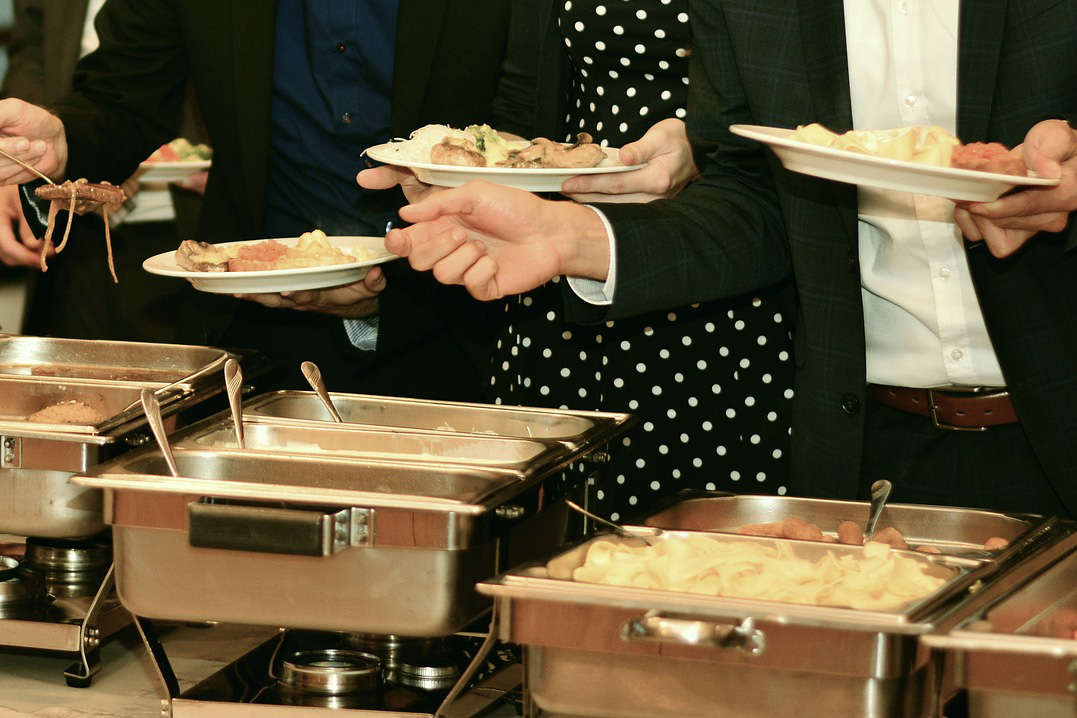COVID-19 has left the proprietors of Arizona buffet and salad bar restaurants struggling with changes that threaten their dining experiences. Could the pandemic mean the end of the buffet experience as we know it?
••••
The modern casual dining industry is defined by instability, as one popular establishment after another collapses due to COVID-19.
But John McDaniel, a seasoned Sizzler franchisee, is in it for the long haul.
“The day I turned 16, I applied and was hired as a Sizzler cashier in Northern California,” McDaniel said. “I’ve been there since 1990.”
Because Sizzler prominently features self-service elements, McDaniel is one of many restaurant owners now facing unprecedented challenges. The coronavirus pandemic has left the proprietors of Arizona’s buffets and salad bars struggling with what they consider stringent sanitation and physical distancing standards that threaten their distinctive dining experiences.
COVID-19 has had a devastating effect on the welfare of self-service restaurants nationwide. In May, buffets managed only one-third of May 2019’s sales numbers, according to NPD Group (as cited in The Wall Street Journal). That same month, Garden Fresh Restaurants, which operated Souplantation and Sweet Tomatoes, filed for bankruptcy.
When the pandemic hit in March, McDaniel laid off 51 employees across his Phoenix and Mesa restaurants and exclusively offered delivery. When Arizona issued regulations for reopening, McDaniel tightened hygiene requirements, even switching his salad bar to an “extremely unpopular” employee-service model.
“I still don’t know if we’ll make it through this,” McDaniel said.
COVID-19 buffet changes
In order to adapt to this climate, some surviving self-service restaurants have taken drastic steps. VitaNova Brands, the parent company of buffets like Old Country, implemented table service.
“We didn’t feel we could come back as a buffet,” said VitaNova marketing manager Misty Moren.
Instead, VitaNova eschewed the term entirely, rechristening its restaurants “AYCE [all-you-can-eat] marketplaces.” Employees previously charged with clearing plates now fulfill “[guests’] needs from start to finish.” Diners can also purchase grocery items like produce; Moren said VitaNova anticipated homebound customers appreciating a “one-stop shop.”
Leveraging its restaurants’ size, VitaNova is unveiling “to-go kitchens” for all its diverse brands at each location. Old Country AYCE customers in Mesa may eventually be able to, as Moren put it, “get a pizza and a sushi roll, and then you can add in a steak and some wings, all in the same order.”
While size helps VitaNova, it helped kill Sweet Tomatoes, according to Natalie Burt Lahr, former Arizona director of operations for Garden Fresh Restaurants.
“We owned our own distribution system — semi trucks, warehouses, central kitchens — we make all our own food from scratch.” Lahr said. “And so our overhead’s huge, and without the volume, we were basically burning through a million dollars a day.”
2020 began with optimism at Garden Fresh. Its owners, Perpetual Capital Partners, had led efforts to upgrade ingredients and remodel restaurants, targeting expansion in 2021. In February, though, Garden Fresh encountered coronavirus warning signs.
“We immediately started noticing a drastic decrease in volume,” Lahr said. California’s and Oregon’s locations signaled the decline, followed by Arizona’s, which lacked their typical springtime boost from tourism.
Lahr said Garden Fresh’s projected 25%-30% hit to traffic ultimately became 50%-75%. The company, alerted early that governors were closing restaurants, shut down preemptively, aiming to outlast COVID-19.
Sweet Tomatoes sent employees home with boxes of food; the employees never ended up returning.
Permanent impact?
Lahr predicted an impending end for other self-service concepts.
“We’d had to do so many different things to try to boost the guest confidence… There was already a struggle,” she said, “and I think this was the final nail in the coffin.”
Yet some salad bars improbably persevere.
Later in the spring, while John McDaniel was operating in an unsustainable employee-service format, his regulars told him Golden Corral, another buffet chain, had fully reopened. McDaniel inquired with the health department, and “got a supervisor that eventually said, ‘Look, it’s recommendations from the governor, there is not an actual law.’”
Cautiously, he restored some semblance of self-service. Customers don masks and gloves, and pay $3.99 anti-congestion surcharges. Employees periodically switch out utensils. A “salad bar safety captain” ensures compliance.
McDaniel’s is the only Sizzler with an operational salad bar, he said.

CJ Villegas, a Surprise-based human resources director, grew up patronizing Phoenix’s Sizzler. According to Villegas, buffet fans know to expect contamination.
“It’s a buffet,” Villegas said. “If you can eat there, you’re not afraid of germs.”
Villegas returned to his longtime favorite buffet, May Garden in northwest Phoenix, during the pandemic, and described the experience as incredibly nostalgic.
“I saw the whole room as I did 20-plus years ago,” Villegas said. “It was like getting into the DeLorean.”
Buffets encourage culinary indulgence; as Zachary Crockett wrote, “Few things epitomize America more.” Arizonans like Villegas will lose beloved establishments if, as Lahr suggested, consumer confidence evaporates.
Self-service may well be doomed, but McDaniel is preserving the restaurant that has defined his career. Despite the continued obstacles of changing regulations, and the loss of his Mesa location to an electrical fire in May, he pushes on.
“Profits were down 210%, 212% at the beginning, and I worked it down to the 70s and 60s,” McDaniel said, “and now I’m down into the 20% loss or negative over last year.
“I’m almost not losing money here!” McDaniel said. “I can see the end of the tunnel, I’m hoping.”
But then: “If there’s a second wave … or another shutdown, it’ll probably put me out of business.”




